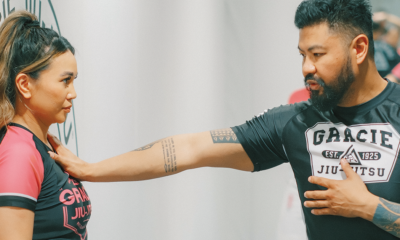Womens Self Defense
Understanding the Legal Boundaries of Self-Defense: What You Need to Know

Self-defense is a fundamental right that allows individuals to protect themselves from harm or danger. However, there are legal boundaries that must be understood in order to ensure that self-defense is used appropriately and within the confines of the law.
Understanding the legal boundaries of self-defense is crucial for anyone who may find themselves in a situation where they need to protect themselves or others. Failure to adhere to these boundaries could result in criminal charges and legal consequences.
The first and most important principle to understand when it comes to self-defense is that it is only justified when there is an immediate threat of harm or danger. In other words, self-defense is only permitted when a person reasonably believes that they are in imminent danger of being harmed. This means that the use of force must be proportional to the threat that is being faced.
Another key principle to keep in mind is the concept of “duty to retreat.” In some jurisdictions, individuals have a legal obligation to try and retreat from a dangerous situation before resorting to self-defense. This means that if it is possible to safely avoid a confrontation, then the individual must do so before using force to defend themselves.
It’s also important to understand the difference between self-defense and retaliation. Self-defense is a reactive measure taken in response to an immediate threat, whereas retaliation is a retaliatory action taken after the threat has been neutralized. Retaliation is not considered self-defense and could lead to legal repercussions.
Furthermore, it is important to know that self-defense is not a license to use excessive force. The force used in self-defense must be proportional to the threat that is being faced. Using more force than is necessary could be considered excessive and may lead to criminal charges.
In addition, it is important to remember that self-defense may not always apply in certain situations. For example, if a person instigates a confrontation or is the initial aggressor in a situation, they may not be able to claim self-defense as a defense.
In conclusion, understanding the legal boundaries of self-defense is essential for anyone who may find themselves in a situation where they need to protect themselves or others. By knowing the principles and guidelines that govern self-defense, individuals can ensure that they are acting within the confines of the law and avoid legal consequences. Remember, self-defense is a right, but it comes with responsibilities and limitations that must be respected.
Womens Self Defense
Breaking Barriers: Women Making Waves in the Defense World

Greetings to all the fierce and empowered women out there! I am Jade Tripp, your go-to expert in women’s self defense and personal protection. Today, I have an important topic to discuss with you: “The Importance of Self-Defense for Women in Today’s World.”
In today’s society, unfortunately, women face a multitude of threats and dangers on a daily basis. Whether it’s walking alone at night, using public transportation, or even just going about your daily routine, it is crucial for women to be prepared and equipped with the knowledge and skills to defend themselves effectively.
One of the key aspects of self-defense for women is awareness. Being aware of your surroundings and potential threats can help you avoid dangerous situations before they escalate. For example, always trust your instincts – if something feels off or uncomfortable, it’s better to be safe than sorry.
Another important aspect of self-defense is learning practical and effective techniques to protect yourself in case of an attack. Taking a self-defense class, such as Krav Maga or Brazilian Jiu-Jitsu, can equip you with the skills and confidence to defend yourself against any potential threat. These classes often focus on teaching women how to use their bodies as weapons and how to escape dangerous situations.
Additionally, carrying self-defense tools such as pepper spray, a personal alarm, or even a tactical pen can provide an added layer of protection in case of emergency. These tools can give you the advantage in a dangerous situation and help you effectively defend yourself.
In today’s world, it is crucial for women to prioritize their personal safety and well-being. By staying aware, learning self-defense techniques, and carrying protective tools, you can empower yourself and feel confident in any situation. Remember, your safety is paramount, and you deserve to feel safe and secure at all times.
So, dear women, I encourage you to take the necessary steps to protect yourself and invest in your own safety. By being proactive and prepared, you can navigate the world with confidence and strength. Stay safe, stay empowered, and remember that you are worth fighting for. Together, we can conquer any challenge that comes our way. Stay fierce!
Womens Self Defense
women’s self defense frontal ckoke #2

real solutions for real dangers. darkmagicselfdefense.com.
source
Womens Self Defense
The Legal Implications of Using Deadly Force in Self-Defense

In a society where personal safety is a top concern for many individuals, the use of deadly force in self-defense is a topic that often sparks debate and controversy. While individuals have the right to defend themselves against imminent threat of harm, including using force if necessary, there are legal implications that must be considered.
The use of deadly force in self-defense is governed by state laws, which vary widely across the country. Most states have laws in place that allow individuals to use deadly force in self-defense if they believe they are in imminent danger of death or serious bodily harm. However, the use of deadly force must be proportional to the threat faced, meaning that individuals cannot use excessive force in self-defense.
In addition to state laws, individuals must also consider the legal concept of “duty to retreat” when using deadly force in self-defense. Some states have laws that require individuals to first attempt to retreat from the threat if possible before resorting to using deadly force. Failure to do so could result in criminal charges, even if the use of force was justified.
Furthermore, individuals must be able to prove that they acted in self-defense when using deadly force. This can often be a difficult task, as the burden of proof is on the individual to show that they were facing an imminent threat of harm and that the use of deadly force was necessary to protect themselves. This can involve providing evidence such as witness testimonies, physical injuries, and police reports to support their claim of self-defense.
It is important for individuals to understand the legal implications of using deadly force in self-defense before taking any action. Consulting with a legal professional can help individuals understand their rights and responsibilities under the law, and ensure that they are prepared to defend their actions if necessary.
Overall, while individuals have the right to defend themselves against harm, the use of deadly force in self-defense comes with legal implications that must be carefully considered. By understanding state laws, the concept of duty to retreat, and the burden of proof in self-defense cases, individuals can navigate the legal system with confidence and ensure that their actions are justified under the law.
-

 Womens Self Defense8 months ago
Womens Self Defense8 months agoNew Legislation Empowers Women to Defend Themselves
-

 Self Defense News1 year ago
Self Defense News1 year agoShe was convicted of killing her abusive boyfriend. Now a Maple Grove woman is home awaiting a new trial.
-

 Self Defense News12 months ago
Self Defense News12 months agoSelf-Defense for All: The new Gracie Jiu-Jitsu Pasadena is for everyone | Online Features
-

 Womens Fitness12 months ago
Womens Fitness12 months agoXtreme Bodyweight HIIT (Lots of Jumping!) | Joanna Soh (Fio Series)
-

 Womens Self Defense1 year ago
Womens Self Defense1 year agoTop 5 Self-Defense Techniques Every Woman Should Know
-

 Womens Preparedness1 year ago
Womens Preparedness1 year ago10 essential skills for surviving in the great outdoors
-

 Womens Self Defense5 months ago
Womens Self Defense5 months agoUnderstanding State-by-State Variation in Self Defense Laws
-

 Self Defense News1 year ago
Self Defense News1 year agoBRPD offering free self-defense classes for women



